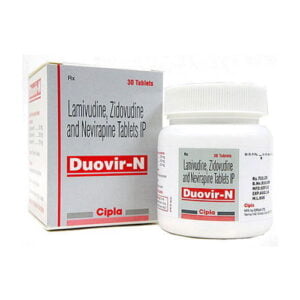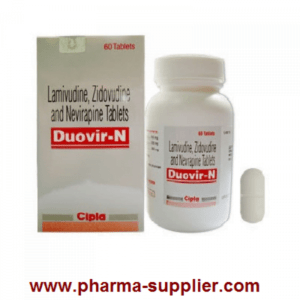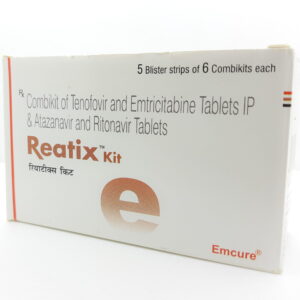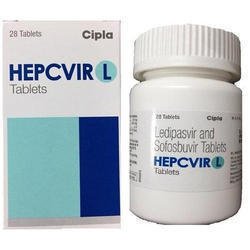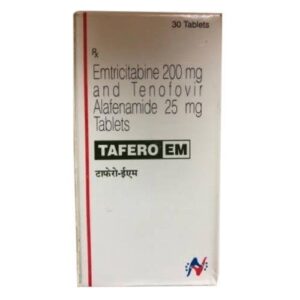Last Updated on September 12, 2024 by admin
Introduction to Thalix 50mg
Thalix 50mg, known generically as thalidomide, is a medication developed primarily by Celgene Corporation. Initially introduced in the late 1950s, thalidomide’s original purpose was to act as a sedative and to alleviate morning sickness in pregnant women. However, it was quickly withdrawn from the market due to its severe teratogenic effects, which led to significant birth defects. With advancements in medical research, thalidomide re-emerged as Thalix 50mg, finding its place in modern therapeutics with more controlled use.
The drug has been repurposed and gained approval from the U.S. Food and Drug Administration (FDA) for specific medical conditions. Thalix 50’s primary indication is for the treatment of multiple myeloma, a form of cancer affecting plasma cells in the bone marrow. By modulating the immune system and impacting the microenvironment of cancer cells, Thalix 50 has demonstrated efficacy in prolonging survival and reducing symptoms in multiple myeloma patients.
Beyond oncology, Thalix 50 is approved for the management of erythema nodosum leprosum (ENL), a painful skin condition associated with leprosy. The drug’s anti-inflammatory and immunomodulatory properties make it effective in reducing the frequency and severity of ENL episodes. By controlling inflammation and modifying the immune response, Thalix 50 alleviates discomfort and helps manage chronic symptoms.
Thalix 50’s journey from a withdrawn sedative to a recognized treatment underscores the significance of continued research and reevaluation of existing drugs for new therapeutic uses. The rigorous evaluation and approval by health authorities, including the FDA, ensure that its benefits outweigh the potential risks when used under proper medical supervision.
In summary, Thalix 50 represents an important therapeutic option for managing multiple myeloma and certain skin conditions associated with leprosy. Its effective reapplication exemplifies the dynamic nature of drug development and regulatory oversight.
USES OF THALIX 50
Thalix 50, also known as thalidomide, serves as a versatile medication used for various medical conditions. Primarily, Thalix 50 is prescribed for the treatment of multiple myeloma, a type of cancer that targets plasma cells in the bone marrow. Its effectiveness in dealing with multiple myeloma is well-documented, due to its twofold action of directly targeting malignant cells and modulating the immune response to combat the disease.
Apart from its role in oncology, Thalix 50 also proves vital in treating complications arising from leprosy. Specifically, it is effective against erythema nodosum leprosum (ENL), a severe inflammatory condition associated with leprosy. By reducing inflammation and regulating immune responses, Thalix 50 helps alleviate the painful skin lesions and other ENL symptoms, improving the quality of life for affected individuals.
Furthermore, Thalix 50 is employed in managing chronic inflammation and autoimmune conditions. Its immunomodulatory properties enable it to control excessive immune activity, thereby providing relief in various inflammatory disorders. These include conditions like Crohn’s disease, rheumatoid arthritis, and lupus, where Thalix 50 helps manage symptoms and potentially slows disease progression.
In addition to these established uses, Thalix 50 is being investigated for several off-label applications in clinical settings. Research has explored its potential efficacy in treating diseases like Behçet’s disease, a chronic condition causing blood vessel inflammation, and certain cancers beyond multiple myeloma. While these off-label uses are still under scrutiny, preliminary results indicate that Thalix 50 might offer benefits across a spectrum of medical conditions.
Overall, Thalix 50’s diverse applications highlight its importance in modern medicine. Its ability to target both oncological and inflammatory pathways underlines its significance, making it a crucial medication for those who suffer from these complex diseases.
Directions for Use
When prescribed Thalix 50, it is crucial to follow the directions given by your healthcare provider to ensure its efficacy and minimize potential side effects. The exact dosage and duration of treatment will depend on your medical condition and response to the medication. Thalix 50 is typically taken once daily at bedtime, either with or without food. Maintaining a consistent schedule is key to obtaining the full benefit of this medication.
To take Thalix 50, swallow the capsule whole with a full glass of water. Do not crush, chew, or open the capsules, as this can affect the release and absorption of the medication. Adhere strictly to the prescribed dosage; taking more than the recommended amount can increase the risk of adverse reactions. If you miss a dose, take it as soon as you remember. However, if it is almost time for your next dose, skip the missed dose and resume your usual dosing schedule. Do not double doses to make up for a missed one.
Special considerations should be taken into account for different patient groups. For example, elderly patients may require closer monitoring due to the potential for increased sensitivity to the drug’s effects. Additionally, individuals with liver or kidney impairments might need dosage adjustments based on their specific health conditions. Pregnant women or those who plan to become pregnant should not use Thalix 50 due to the risk of severe birth defects. It is also highly recommended for males using Thalix 50 to use effective birth control methods and avoid fathering a child during and shortly after treatment.
The importance of adhering to the prescribed regimen cannot be overstated. Deviating from the directed use of Thalix 50 can compromise treatment effectiveness and increase the likelihood of unwanted side effects. Always consult your healthcare provider if you have any questions or uncertainties about your medication regimen to ensure safe and effective use of Thalix 50.
Benefits of Thalix 50
Thalix 50, also known by its generic name thalidomide, is a versatile medication primarily recognized for its efficacy in treating multiple myeloma and specific leprosy-related skin conditions. The benefits of Thalix 50 have been corroborated by numerous clinical trials and supported by a wealth of patient testimonials, highlighting its valuable role in modern medical treatments.
Multiple myeloma, a type of cancer that affects plasma cells, has shown significant responsiveness to Thalix 50. Clinical trials indicate that patients with multiple myeloma experience improved survival rates and enhanced quality of life when treated with Thalix 50mg in combination with other therapeutic agents. One such study, published in the New England Journal of Medicine, reported that the inclusion of Thalix 50mg in the treatment regimen resulted in a higher overall response rate compared to standard therapies alone. Patient feedback further underscores the medication’s ability to relieve symptoms and curb disease progression, providing a sense of hope and improved well-being among sufferers.
In addition to its application in oncology, Thalix 50 demonstrates considerable efficacy in managing erythema nodosum leprosum (ENL), a painful and potentially debilitating skin condition associated with leprosy. Patients with ENL who were administered Thalix 50mg experienced rapid symptom relief, including reduced inflammation and pain, thus leading to better skin health and functionality. A controlled trial published in the Journal of Infectious Diseases showed that Thalix 50mg treatment facilitated quicker symptom resolution compared to other therapeutic options.
Beyond its primary uses, ongoing research continues to explore other potential therapeutic benefits of Thalix 50. Preliminary evidence suggests that Thalix 50mg may offer therapeutic value in treating conditions such as Crohn’s disease, HIV-related complications, and certain inflammatory disorders. Although these investigational uses require further validation through clinical studies, the initial findings provide an encouraging outlook for Thalix 50mg’s broader application in medical practice.
Storage Recommendations
Maintaining the efficacy of Thalix 50 hinges significantly upon appropriate storage conditions. This medication should be stored at a controlled room temperature, ideally between 20°C to 25°C (68°F to 77°F), ensuring that temperature fluctuations remain minimal. Exposing Thalix 50 to excessive heat, cold, or humidity can compromise its effectiveness.
Protection from light and moisture is paramount when storing Thalix 50. It is advisable to keep the medication in its original packaging, which is specifically designed to shield the contents from these elements. This practice will help in preserving the integrity of the capsules for the duration of their shelf life.
Ensuring that Thalix 50 is safely stored out of the reach of children and pets cannot be overstated. Accidental ingestion can result in serious health risks, making it imperative to place the medication in a locked cabinet or another secure location. Additionally, avoid transferring the medication to an unmarked container, as this can lead to confusion and potential misuse.
Handling expired or unused Thalix 50 should be done with caution. It is recommended to follow local guidelines for the proper disposal of medication, which often involves returning the unused drug to a pharmacy or using a medication take-back program. Do not dispose of Thalix 50 by flushing it down the toilet or throwing it into household trash, as this can pose environmental hazards.
By adhering to these storage recommendations, users can ensure that Thalix 50 remains safe and effective for use when needed, providing optimal therapeutic benefits while minimizing potential risks.
Side Effects of Thalix 50
Thalix 50, a medication commonly prescribed for certain cancer and inflammatory conditions, carries a range of potential side effects, some of which are relatively common while others can be more severe. Understanding these side effects is crucial for patients and healthcare providers alike to ensure safe and effective use.
Among the more frequently reported side effects are drowsiness, dizziness, and constipation. These are generally manageable and can often be mitigated with some proactive measures. For instance, patients may find relief from drowsiness and dizziness by ensuring adequate rest and rising slowly from sitting or lying positions to prevent falls. For constipation, increasing dietary fiber intake, staying hydrated, and engaging in regular physical activity can be beneficial. Additionally, over-the-counter laxatives or stool softeners may be considered under the guidance of a healthcare provider.
However, Thalix 50 is also associated with more serious adverse reactions that necessitate immediate medical attention. One such reaction is the formation of blood clots, which can manifest as deep vein thrombosis or pulmonary embolism. Symptoms to watch for include unexplained swelling, pain in the limbs, sudden shortness of breath, chest pain, or rapid heart rate. If any of these symptoms are observed, it is critical to seek emergency medical care.
Another significant risk is the development of peripheral neuropathy, characterized by tingling, numbness, and pain in the hands and feet. This condition can worsen over time and may become irreversible if not promptly addressed. Patients experiencing these symptoms should report them to their healthcare provider as soon as possible.
It is essential to maintain open communication with healthcare professionals while undergoing treatment with Thalix 50. Regular monitoring and reporting of any side effects can help in the timely management of adverse reactions, thereby improving the overall treatment experience and outcomes for patients.
Common side effects of Thalix 50
- Nausea
- Rash
- Breathlessness
- Dizziness
- Edema (swelling)
- Decreased calcium level in blood
- Fatigue
- Muscle weakness
- Anxiety
- Confusion
- Decreased white blood cell count (neutrophils)
- Constipation
- Tremors
- Sensory neuropathy
- Change in body weight
- Decreased white blood cell count (lymphocytes)
- Thromboembolism
- Muscle pain
- Anaphylactic reaction
- Headache
- Sleepiness
- Decreased potassium level in blood
HOW TO USE THALIX 50
How Thalix 50 Works
Thalix 50, also known as thalidomide, operates through several complex mechanisms at both the molecular and cellular levels to exert its therapeutic effects. Primarily, this drug has a profound impact on the immune system, inflammation reduction, and inhibition of angiogenesis.
At the cellular level, Thalix 50 modulates immune responses by affecting the activity of various cytokines, which are proteins crucial for cell signaling in immune responses. One of the significant effects is the suppression of tumor necrosis factor-alpha (TNF-α), a cytokine that plays a vital role in promoting inflammation. By inhibiting TNF-α, Thalix 50 effectively reduces inflammatory responses, which can be beneficial in treating conditions characterized by excessive inflammation, such as multiple myeloma and leprosy.
Additionally, Thalix 50 enhances the production of interleukin-2 (IL-2) and interferon-gamma (IFN-γ), further modulating immune responses by promoting the activity of T-cells, an essential component of the immune system that targets infected or malignantly transformed cells. This modulation contributes to the drug’s ability to help combat certain cancers by bolstering the body’s natural immune defenses.
Thalix 50 also inhibits angiogenesis—the formation of new blood vessels—by disrupting the function of vascular endothelial growth factor (VEGF) and basic fibroblast growth factor (bFGF). These growth factors are crucial for the development of new blood vessels, which tumors need to grow and metastasize. By obstructing angiogenesis, Thalix 50 starves the tumor of the necessary blood supply, limiting its growth and potential spread.
To sum up, Thalix 50’s multifaceted mechanisms encompass immunomodulation, anti-inflammatory effects, and anti-angiogenic actions, making it a versatile and effective therapeutic agent for a variety of conditions. Understanding these processes helps in appreciating how Thalix 50 can offer significant benefits in clinical settings, contributing to improved patient outcomes in different therapeutic contexts.
General Warnings and Safety Advice
Thalix 50, known generically as thalidomide, necessitates meticulous adherence to safety guidelines to avoid serious adverse effects. Absolute caution is required for pregnant women, as Thalix 50 is notoriously teratogenic, meaning it can cause significant congenital disabilities. Women of childbearing potential must employ stringent contraceptive measures and take periodic pregnancy tests while on this medication.
Individuals with preexisting medical conditions should seek comprehensive medical evaluation before initiating Thalix 50. Conditions such as a history of thrombosis or deep vein thrombosis (DVT), liver or kidney impairment, and neuropathy might exacerbate under this medication. Informing healthcare providers of all underlying health issues ensures tailored medical guidance and minimizes potential complications.
Thalix 50 may interact with other medications, emphasizing the need for vigilance regarding drug-drug interactions. Blood thinners, such as warfarin, might require dose adjustments or additional monitoring to prevent bleeding complications. Similarly, co-administration with other sedatives, antihistamines, or antidepressants could potentiate sedative effects, necessitating professional oversight. Patients should maintain an updated list of all medications and supplements they are taking, providing it to healthcare practitioners regularly.
Patients are advised to avoid alcohol consumption while on Thalix 50, as alcohol might amplify the drug’s sedative side effects, leading to pronounced drowsiness, dizziness, and impaired judgment. It is equally crucial to abstain from activities requiring full alertness, including driving and operating heavy machinery, until the individual understands how Thalix 50 affects their cognitive and motor functions.
Lifestyle adjustments, such as adopting a balanced diet, engaging in moderate exercise, and staying hydrated, are recommended to bolster overall health while using Thalix 50. Regular consultations with healthcare providers ensure effective management of side effects and promote adherence to safety protocols.
Dietary Recommendations
Dietary considerations are crucial for patients undergoing treatment with Thalix 50, as a balanced diet can enhance the medication’s effectiveness and mitigate potential side effects. Patients are advised to prioritize a nutrient-rich diet that supports overall health and helps manage any adverse reactions to the medication.
Firstly, patients should focus on incorporating a variety of fresh fruits and vegetables into their daily meals. These foods are high in essential vitamins, minerals, and antioxidants, which aid the body in coping with the stresses of medication and improving immune function. Leafy greens, berries, and citrus fruits are particularly beneficial.
Lean proteins such as chicken, turkey, fish, tofu, and legumes should also be included to help maintain muscle mass and strength, which can be affected during treatment. Omega-3 fatty acids, found in fatty fish like salmon and mackerel, as well as flaxseeds and walnuts, are known for their anti-inflammatory properties and can help reduce some medication-induced inflammation.
Hydration plays a vital role in maintaining proper bodily functions and aiding digestion, especially when taking medications like Thalix 50. Patients should aim to drink at least 8-10 glasses of water daily to stay well-hydrated. Additionally, herbal teas and naturally hydrating foods such as cucumbers and melons can be beneficial.
It’s equally important to avoid certain foods that may exacerbate side effects or interfere with Thalix 50. High-sodium foods and processed snacks can increase the risk of swelling and hypertension. Alcohol and caffeine should be limited as they can lead to dehydration and further stress on the body.
Nutritional supplements may be necessary for some patients but should be used under the guidance of a healthcare professional to avoid adverse interactions. Vitamins such as B12, D, and calcium, as well as iron supplements, may be recommended based on individual nutritional needs.
Consulting with a dietitian can be invaluable for personalized dietary recommendations tailored to one’s specific health profile while on Thalix 50. With these dietary adjustments, patients can better navigate their treatment regimen while supporting their overall health and well-being.
SAFETY ADVICE
Alcohol
Pregnancy
Breast feeding
Driving
You may experience side effects, such as dizziness, tiredness, sleepiness or blurred vision with Thalix 50 Capsule and this may affect your ability to drive.
Kidney
Liver
WHAT IF YOU FORGET TO TAKE THALIX 50mg?
Quick tips
- Thalix 50mg Capsule should be taken on an empty stomach, try to take it at same time every day.
- Do not skip any dose and complete the course as suggested by your doctor.
- Use an effective method of birth control to avoid pregnancy while taking this medication.
- Do not donate blood during or after 7 days of the treatment with this medicine.
- Your doctor may get regular blood tests done to monitor your blood cell count and liver function.
FAQs about Thalix 50
Q1: What is Thalix 50 used for?
A: Thalix 50 (Thalidomide) is used primarily to treat multiple myeloma, a type of cancer that affects plasma cells. It is also used to manage erythema nodosum leprosum (ENL), a painful skin condition in patients with leprosy.
Q2: When is the best time to take Thalix 50?
A: Thalix 50 is generally taken once daily, preferably at bedtime, to reduce the risk of drowsiness or dizziness. It should be taken on an empty stomach or with a light meal, as directed by your healthcare provider.
Q3: What are the long-term side effects of Thalix 50?
A: Long-term use of Thalix 50 may lead to side effects like peripheral neuropathy (nerve damage), drowsiness, fatigue, and an increased risk of blood clots. Regular monitoring by a doctor is necessary during long-term therapy to manage any adverse effects.
Q4: Can you provide a review of Thalix 50?
A: Patients report Thalix 50 as effective in treating multiple myeloma and ENL, but common complaints include fatigue, constipation, and numbness in extremities due to nerve damage. Its benefits are often weighed against the risk of serious side effects.
Q5: What are the common uses of Thalix 50?
A: The common uses of Thalix 50 include treatment for:
- Multiple Myeloma: Often in combination with other drugs like dexamethasone.
- Erythema Nodosum Leprosum (ENL): Reduces skin symptoms and inflammation in leprosy patients.
Q6: What is the recommended dosage of Thalix 50?
A: The dosage varies depending on the condition being treated:
- For multiple myeloma, the typical starting dose is 200 mg daily.
- For ENL, the dose ranges from 100 to 400 mg daily, depending on severity. Always follow your doctor’s instructions for dosage.
Q7: Is Thalix 50 safe to use?
A: Thalix 50 is safe when used as prescribed, but it carries significant risks, including severe birth defects, blood clots, and nerve damage. Patients must follow strict safety guidelines and be part of a Risk Evaluation and Mitigation Strategy (REMS) program to prevent pregnancy-related risks.
Q8: Does Thalix 50 cure HIV infection?
A: No, Thalix 50 does not cure HIV infection. It is not an antiviral medication and is used specifically for conditions like multiple myeloma and ENL.
Q9: Is Thalix 50 safe in pregnancy?
A: No, Thalix 50 is highly unsafe in pregnancy. It is known to cause severe and life-threatening birth defects. Women of childbearing age must use two forms of contraception and undergo regular pregnancy testing during treatment.
Q10: Can Thalix 50 be used in children?
A: Thalix 50 is not commonly used in children, especially due to the risk of severe side effects like nerve damage and its teratogenic effects. Its use in pediatric cases would be under very specific medical conditions and guidance.
Q11: What if I miss a dose of Thalix 50?
A: If you miss a dose of Thalix 50, take it as soon as you remember, unless it is close to the time of your next dose. In that case, skip the missed dose and continue with your regular schedule. Do not double the dose to make up for a missed one.
Q12: Can I stop taking Thalix 50?
A: You should not stop taking Thalix 50 without consulting your healthcare provider. Stopping treatment abruptly can lead to worsening of your condition.
Q13: What are the uses of Thalix 50?
A: Thalix 50 is primarily used for:
- Multiple myeloma treatment
- Management of ENL
- Other off-label uses may include treatment for certain inflammatory diseases or cancers under strict medical supervision.
Q14: Are there alternative medications to Thalix 50?
A: Yes, alternative medications include:
- Lenalidomide (Revlimid): A related drug for multiple myeloma with fewer side effects.
- Bortezomib (Velcade): Another drug used in multiple myeloma treatment. Consult your doctor to determine the best option for your condition.
Q15: Can Thalix 50 interact with other medications?
A: Yes, Thalix 50 can interact with medications like warfarin (a blood thinner), increasing the risk of blood clots. It may also interact with sedatives, alcohol, and drugs that cause drowsiness, enhancing their effects.
Q16: How long does it take for Thalix 50 to show results?
A: The effects of Thalix 50 may take a few weeks to months to become noticeable, particularly in the treatment of multiple myeloma. Regular monitoring by your doctor is important to track progress.
Q17: What precautions should be taken while using Thalix 50?
A: Precautions include:
- Avoiding pregnancy (strict birth control measures).
- Regular monitoring of nerve function due to the risk of peripheral neuropathy.
- Avoiding activities that require full alertness if you experience drowsiness.
Q18: Where can I get more information about Thalix 50?
A: For more detailed information, refer to resources like FDA Thalomid Label or Drugs.com.
Q19: What is the success rate of Thalix 50 in treating multiple myeloma?
A: Thalix 50 has shown significant success in combination with other drugs in treating multiple myeloma, improving survival rates and quality of life in patients. However, it is not a cure, and its success depends on individual patient response.
Q20: How should Thalix 50 be stored?
A: Thalix 50 should be stored at room temperature, away from moisture, heat, and light. Keep it out of the reach of children and pets.
Q21: Can Thalix 50 cause weight gain?
A: Weight gain is not a common side effect of Thalix 50, but some patients may experience changes in appetite or fluid retention during treatment.
Q22: Can I drink alcohol while taking Thalix 50?
A: It is recommended to avoid alcohol while taking Thalix 50, as it can enhance side effects like drowsiness and increase the risk of nerve damage or gastrointestinal issues.
Q23: Does Thalix 50 cause nerve damage?
A: Yes, peripheral neuropathy (nerve damage) is a common and potentially irreversible side effect of Thalix 50. Symptoms include tingling, numbness, or pain in the hands and feet.
Q24: Is it safe to drive while taking Thalix 50?
A: Driving or operating heavy machinery may not be safe while taking Thalix 50, as it can cause drowsiness, dizziness, and reduced coordination.
Q25: Are there dietary restrictions while taking Thalix 50?
A: There are no specific dietary restrictions, but it’s advisable to avoid alcohol and maintain a balanced diet. If you experience constipation (a common side effect), increasing fiber and fluid intake may help.
References:
This FAQ covers the major uses, side effects, and precautions for Thalix 50 (Thalidomide), but it is important to consult with your healthcare provider for personalized medical advice.
References:
- Celgene Europe B.V, Electronic Medicines Compendium (EMC), [Revised on Aug 2021] [Accessed on 29 Nov 2022], https://www.medicines.org.uk/emc/files/pil.6317.pdf
- Celgene Corporation, US Food and Drug Administration, [Revised on Jun 2019] [Accessed on 29 Nov 2022], https://www.accessdata.fda.gov/drugsatfda_docs/label/2019/020785s067lbl.pdf
- Douglas F. Lake and Adrienne D. Briggs, Immunopharmacology, Lange’s Basic & Clinical Pharmacology, 14th Edition, 2018, 977-1002.
- D.H. Dockrell, S. Sundar, B.J. Angus, R.P. Hobson, Infectious Disease, Davidson’s Principles and Practice of Medicine, 22nd Edition, 2014, 293-386.







